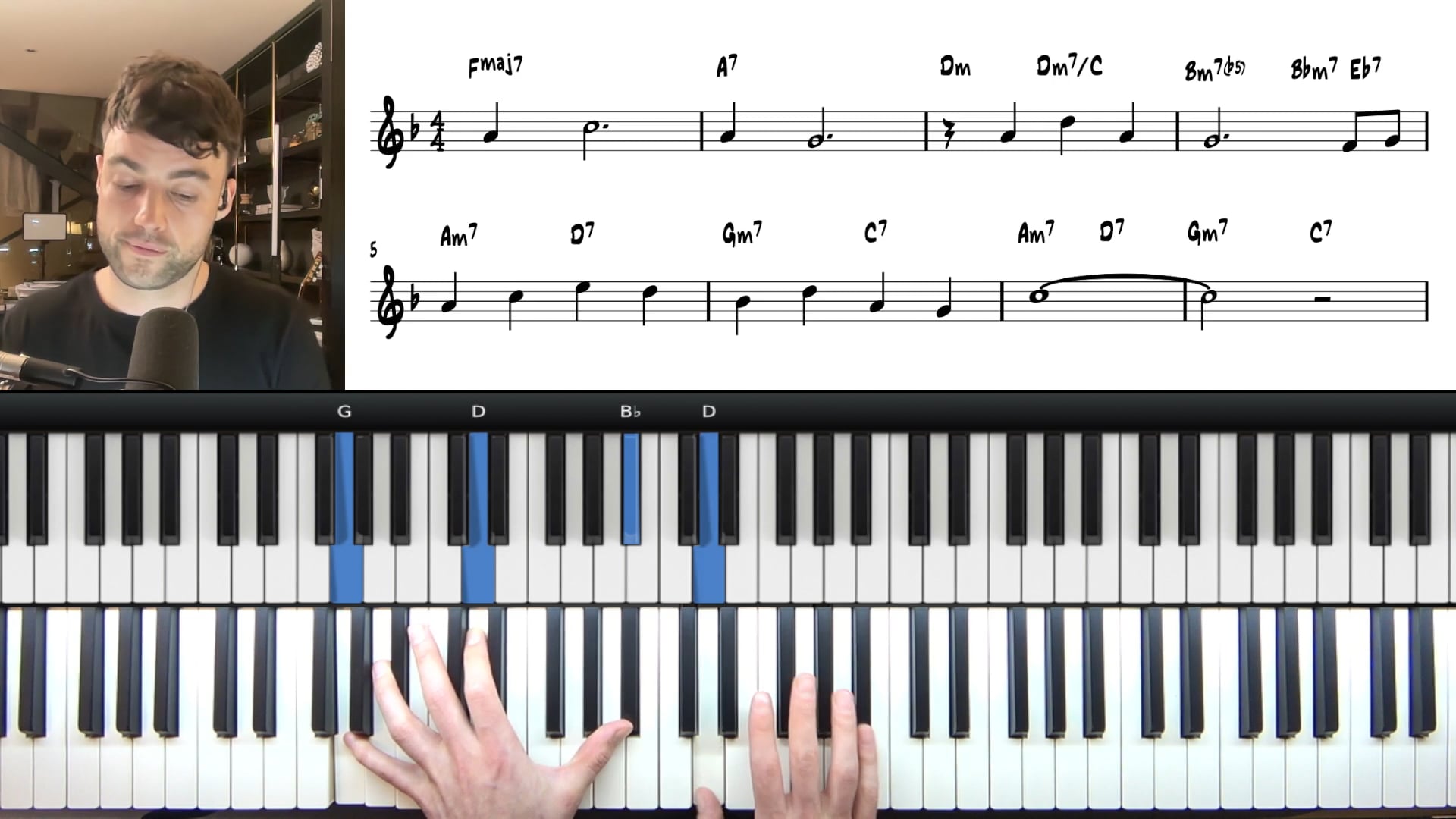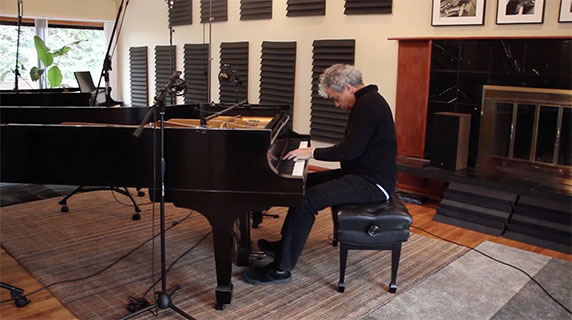
Tuomo Uusitalo
Tuomo is an award-winning pianist, composer, arranger and educator. Having released two albums as a leader, he has established himself in the New York jazz scene and continues touring internationally both as a leader as well as sideman.
Live Seminar Resources
Live Seminar Resources
PDF Downloads
- Someday My Prince Will Come - Chord Chart
Join PianoGroove Pro to access all downloads and learning resources.
Download theory supplements, midi files, chord changes and full note-for-note transcriptions of every lesson.
- Someday My Prince Will Come - Herbie Hancock
Join PianoGroove Pro to access all downloads and learning resources.
Download theory supplements, midi files, chord changes and full note-for-note transcriptions of every lesson.
Related Lessons
Forum Threads
Seminar Description
Seminar Description
"Someday My Prince Will Come" – Jazz Standard Workshop
Welcome to this in-depth workshop on the jazz standard "Someday My Prince Will Come". This lesson explores the harmonic structure, common variations, and advanced reharmonization techniques used by jazz musicians. This timeless tune, originally from Snow White and the Seven Dwarfs, became a jazz standard largely due to Miles Davis’ 1961 recording.
By the end of this lesson, you will have a deeper understanding of the 2-5-1 progressions, dominant substitutions, diminished passing chords, and pedal-point techniques that are frequently used in jazz interpretations of this piece.
The Harmonic Structure of "Someday My Prince Will Come"
At its core, "Someday My Prince Will Come" follows a 32-bar form in 3/4 time, making it a great example of a jazz waltz. Understanding the A, B, and C sections is crucial for analyzing the movement of harmony.
- The A section (first 8 bars) introduces the key of Bb major, moving quickly to the IV (Ebmaj7) through a dominant III7 chord (D7).
- The B section introduces a D-7 to G7 (2-5 in C major) before resolving to C-7 to F7 (2-5 in Bb major).
- The C section features a return to Bbmaj7 with a blues-inspired diminished passing chord (F#dim7) leading back to the tonic.
Notable Harmonic Features
-
III7 as a Passing Chord
Instead of a typical 2-5-1 to the IV, jazz musicians use D7 to lead into Ebmaj7. This dominant chord adds harmonic interest by briefly implying a new key center. -
Descending Diminished Passing Chords
The tune features a C# diminished chord (C#dim7) between D-7 and C-7, functioning as a chromatic passing chord to strengthen the harmonic motion. - Blues-Influenced Turnarounds
The F#dim7 chord near the end of the form is a classic blues move, which is frequently used to transition back to the tonic chord.
Variations in Jazz Interpretations
Many jazz musicians add their own reharmonizations and substitutions to "Someday My Prince Will Come." Here are some of the most common techniques:
-
Tritone Substitutions – Instead of D7 to G7, try Ab7 to G7 for a tritone substitution. Likewise, replacing F7 with B7 creates a stronger chromatic pull.
-
Extended II-V Progressions – A simple C-7 to F7 (2-5-1 in Bb) can be expanded into G-7 to C7 to F7 for a more harmonically rich sound.
-
Pedal Points – The Miles Davis recording features an F pedal tone in the bass for the first 8 bars, allowing upper harmonies to move freely over a static bass note.
- Block Chords & Voicing Techniques – Bill Evans and Herbie Hancock frequently used block chords (chord tones moving in parallel) and quartal voicings to enrich the harmony.
Transcription Analysis: Herbie Hancock’s Interpretation
Herbie Hancock’s solo piano arrangement of "Someday My Prince Will Come" (from The Piano, 1979) offers a modern, reharmonized take on the tune. Here are key elements from his arrangement:
-
Intro with an F Pedal – Herbie establishes a sense of tension by keeping F in the bass while cycling through altered harmonies.
-
Modal Interchange – He frequently switches between Bb major and Bb minor sounds, using Eb minor voicings to introduce a darker tonality.
-
Upper-Structure Triads – Instead of traditional 7th chord voicings, Hancock uses triadic structures like B major over F bass, creating a Lydian dominant effect.
- Rhythmic Displacement – He subtly shifts chord placements within the 3/4 time signature, creating an elastic sense of phrasing that makes the waltz groove less rigid.
Practice Tips
-
Identify 2-5-1 Progressions – "Someday My Prince Will Come" is full of 2-5-1 movements. Isolate and practice these sections to improve your harmonic recognition.
-
Experiment with Tritone Substitutions – Replace V7 chords with their tritone substitutes and listen for the different colors they produce.
-
Use Pedal Points for Harmonic Freedom – Try playing the first 8 bars over an F pedal (like in the Miles Davis version) and experiment with different voicings above it.
-
Analyze and Imitate Jazz Masters – Study the recordings of Miles Davis, Bill Evans, and Herbie Hancock to hear how they interpret the harmony and rhythm.
- Develop a Jazz Waltz Feel – Focus on emphasizing beat 2 in a 3/4 time signature to capture the authentic jazz waltz swing.
Final Thoughts
"Someday My Prince Will Come" is a fantastic study in harmonic movement, reharmonization, and jazz waltz feel. Whether you prefer Miles Davis’ floating horn lines, Bill Evans’ elegant voicings, or Herbie Hancock’s modern harmonic twists, this tune offers endless opportunities for exploration.
Take your time to analyze, play, and experiment with different approaches, and don’t hesitate to share your insights and questions in the PianoGroove community forum!









Thx awesome tune and teaching!!